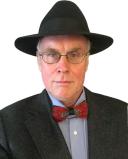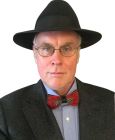Autism
Is the Definition of Autism Too Broad?
An answer to the psychologists who suggest it is . . .
Posted June 2, 2018
Late at night, when I’m alone, I sometimes ponder what it means to be autistic. Do I experience sounds and smells differently from an allistic (non autistic) person? Scientific studies suggest I do. If that is the case, whose perception is correct – mine, theirs, or both? At one time, doctors assumed the allistic view of the world was the correct one, and autistic perspectives were wrong or delusional.
That question lies at the heart of what autism is.
As an autistic person I believe my experience of the world is just as valid as anyone else’s. When I associate colors with sounds, or see details others can’t, my experience of those things is richer than most, and that is a gift. When I look at a machine and see a problem that is inscrutable to an allistic, that too is a gift. When I look at a person and fail to discern their wish for my sympathy or attention, that can be a disability.
For me, that is the mix of ability and disability that is autism. My different perceptions have allowed me to solve problems that could not be cracked by allistic thinkers. Not because I am smarter, but because I think differently and work with subtly different sensory inputs. 99% of the problems of the world may not require a mind like mine, but 1% do. Perhaps that’s why there is a sprinkling of us in the population.
That is the essence of the neurodiversity argument that has emerged over the past decade. Neurodiversity is the idea that neurological diversity – autism, ADHD, PDD-NOS, dyslexia and other cognitive differences – are part of the range of human diversity. They are not defects; they are a natural part of our species. While the argument for neurodiversity encompasses all forms of inborn difference, the neurodiversity movement has emerged from autism advocacy and most conversation therefore centers around autism.
Just as some of us are smart and some are not, some are tall and others short, some of us are autistic while others are not. Autistic people might be described as the “extremely tall” or “red-headed” people of the cognitive world. We are few in number but unquestionably part of the human tribe.
That description stands at odds with how some psychologists see autism. To them, the word describes pathology. A person with autism has a serious communication disorder. Perhaps they can’t talk or give signs of understanding. They have restricted interests, and unusual fixations, and pass the day arranging blocks on the floor, lost in a world no one else can enter.
Such people exist, and they have autism. But so do I. I can speak, but have other communication disabilities. I’ve outgrown playing with blocks most of the time, but still get fixated. That can be a gift or a disability, depending on the circumstance.
Some psychologists think the definition of autism has become too broad. They say a term that encompasses people at all points on the cognitive curve is so broad as to be useless. That is the essence of debate around the "high functioning," "low functioning" labeling so many autistics find offensive. Fact is, other descriptors are applied to people with all possible cognitive abilities. Think of the range of depressed people, or anxious people, to name two of the most common.
There are those who argue that those diagnostic spectrums are too broad too.
Someone like me would not have been diagnosed with autism at all under the rules of DSM III. A few years later, with the arrival of DSM IV, I was diagnosed with Asperger’s (now a descriptor for autism) and later under DSM5, I was re-diagnosed on the autism spectrum. Has my diagnoses somehow taken something away from those with greater impairment who would have qualified for the autism label under DSM III?
That is the essence of their argument. They feel the expansion of the autism definition has so increased the diagnosed population, that the original group is rendered invisible.
That is a topic that is increasingly debated among scientists who belong to INSAR, the International Society for Autism Research. Over the past decade I have seen a considerable change in the makeup of INSAR. Ten years ago, members were mostly neuroscientists, biologists, and geneticists. That was consistent with the thinking of the day, that autism was a serious neurological disorder. Autism was certainly a pathology; the idea it might be part a human diversity was not seriously considered. Today's INSAR is increasingly dominated by psychologists and social scientists, some of whom question the pathology model. Others question the breadth of the definition.
The gradual changes in how we define autism made for many more diagnoses among schoolchildren and even adults. Over the past 20-some years, a generation of newly diagnosed people has grown, and our voices have changed how the world sees autism.
We have shown the world that we are far more than a pathology or developmental mistake. Our disabilities are real, but so are the exceptionalities in some of us. The testimony of autistic people has caused a re-evaluation of us and our place in the world.
Autistics ask for help getting jobs, making friends, and integrating into society. Their calls for practical assistance have drawn many more psychologists into autism research. Autistics ask for help communicating, and when medicine has not provided answers they turned to engineers. Thanks to them, formerly non-speaking autistics are finding voice through electronic technology and assistive devices.
Those new people have changed the face of autism science. When I look at that evolution, I wonder about the questions people raise about redefining autism. Has the definition become too broad?
Neuroscientists are hard at work on that question from a different perspective. For almost a century, autism has been diagnosed by behavioral observation. As the breadth of the diagnosed spectrum has expanded, they ask if all autism has a common biological foundation, or if there are multiple paths into autism. Some suggest there are many different autisms at the molecular level, all manifesting under one diagnostic label.
Genetic studies have identified many variations that are implicated in autism. Some are stable and heritable, supporting the neurodiversity paradigm; while others are one-off mutations that suggest pathology.
Some genetic markers for autism are associated almost exclusively with very severe disability. Most are not; they can be present in a person whose IQ and other traits may be anywhere on the curve at all.
Other biomarker studies have identified differences in brain connectivity or brain plasticity between autistic and allistic people. Some of those studies show promise in separating autistic and allistic populations, but most cannot resolve where an individual might fall on either of the spectrums.
Interestingly, most biomarker research seems to classify people as autistic in line with the current, expanded, definition of the autism spectrum. That supports the idea that this broader spectrum is the more correct definition.
What about how autism was first recognized and defined? We cannot go back and ask people like Kanner, Asperger, Frankl or Weiss, but we can look at their writing. Seventy years ago, they observed traits of autism in both bright and intellectually disabled people. They observed that autistic children were often born to parents who were eccentric, creative, or both. They sometimes noted traits of autism in the parents. Observed traits of autism seemed to be present from the beginning of life, or as near so as one could observe.
While the meaning of that has been argued at length, I believe those observations support the present-day neurodiversity paradigm, with the proviso that some cases of autism are pathological in nature, and the ability to separate those cases may evolve in the future.
When knowledge of a cognitive condition is limited, only the most striking differences can be resolved. That’s why the first people to be diagnosed with autism were fairly severely impacted. The clinicians who defined autism were perceptive enough to recognize a breakdown of affective contact as a key symptom. Later, that would be narrowed to “can’t speak or understand language,” but that was not the original definition. Today’s understanding of autistic communication impairment is broader, but arguably more in line with the original affective contact descriptor.
The correct way to narrow the autism spectrum is not through revising the definition psychologists use. Behavioral observation is by nature highly imprecise. If we want a more precise definition, the way to get it will be through development of biomarkers. When that happens I predict we will have several, and some or most will support the idea of autism as a stable heritable form of humanity.
We already know exposure to chemicals like lead or mercury can cause brain damage. We know fevers and infections can have that result, as can injury. There is little doubt there are some pathological causes for autistic behavior, but I doubt that will emerge as the majority of cases.
When psychologists complain that today’s autism spectrum is too broad, one point is seldom mentioned: If not autistic, how would they describe a person who qualifies for an autism diagnosis under DSM5, but would not qualify under DSM III? I am an example, and I can tell you from experience that the diagnostic labels I received prior to being diagnosed autistic were far less useful.
While psychologists might benefit from a smaller, more defined spectrum, people like me most assuredly did not benefit from that arrangement. Understanding I am autistic gave me a framework for changing my life. Understanding that I had trouble engaging other people told me nothing beyond what I could see for myself. Other labels I received before my autism diagnosis were useless or even harmful.
Some may argue that lumping bright people and intellectually disabled people into one autism spectrum marginalizes the intellectually disabled people. While I do think bright autistic people shape popular public opinion in ways that are not always realistic, I do not think our presence in the autism community deprives cognitively disabled people of services.
The sad truth is, people with severe cognitive disability have always been hidden from sight, and their treatment has often been poor. Conditions for intellectually disabled people are better overall than they were a generation ago.
Diagnostic labels tend to follow the money. If there is more funding for intellectual disability more people will be diagnosed with ID. The need for services for intellectually disabled people is obvious. The recognition that bright quirky disabled people need help too does not take away from that.
In summary, I believe the current broad definition of autism is the most accurate definition we have for now, given we diagnose by observation. I support the development of biomarkers and look forward to a time when we can parse autism into different flavors, some of which may be responsive to specific treatments for their most disabling aspects. At the same time, I look forward to a day when neurodiversity is widely accepted and people who are different are valued as equals in our society.
In that wish I join members of many other marginalized groups, for whom I wish the best for our collective success in advocacy.




